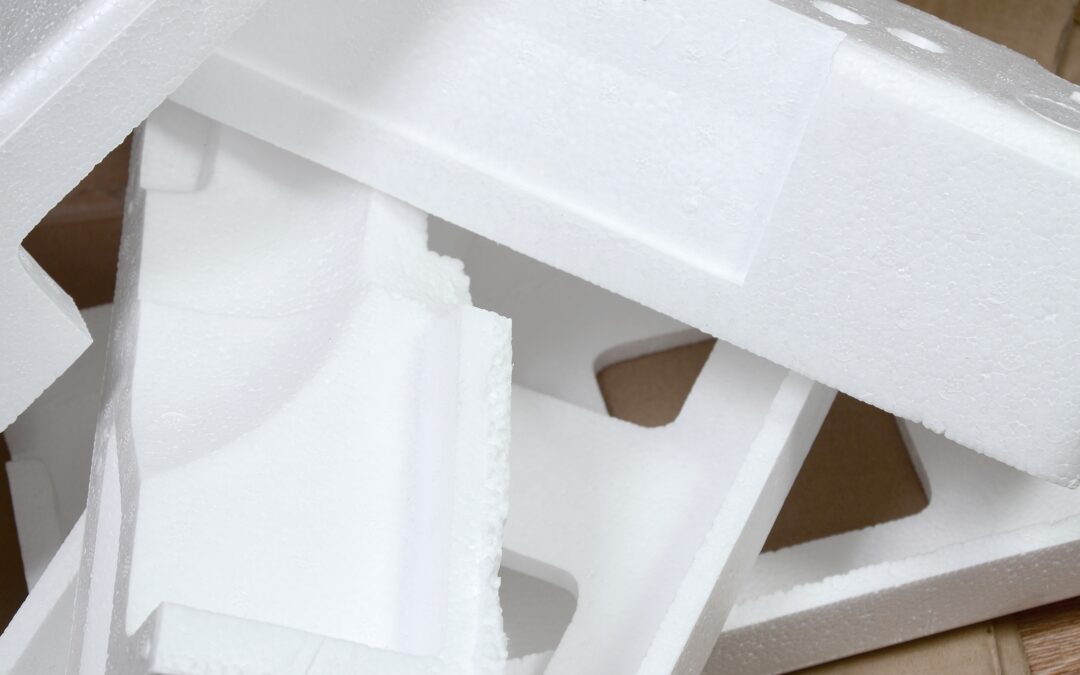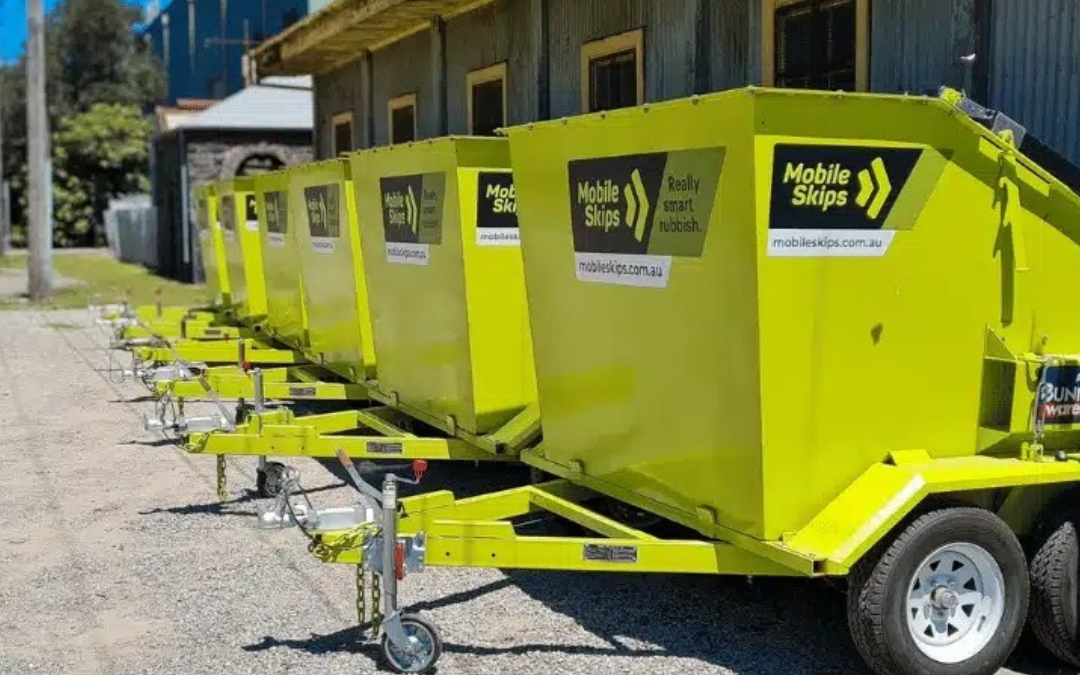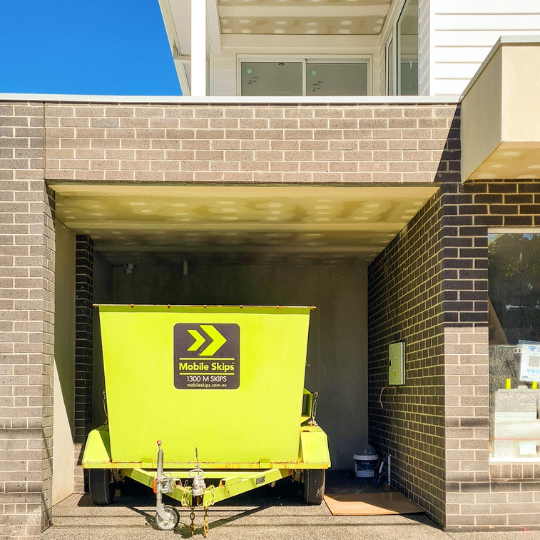Overview of Waste Generated During Home Renovations
When you embark on a home renovation project, a significant amount of waste is often produced. This home renovation waste can be reduced through waste minimisation techniques. For example, you might consider implementing a waste management plan, choosing deconstruction over demolition, donating and selling unused materials, and reusing materials for new purposes. These methods can greatly help manage the waste generated during your renovation.
Different types of waste are generated during renovations, including wood scraps, drywall debris, brick remnants, old appliances, and insulation materials. Each of these requires proper disposal methods to ensure environmental safety and compliance with regulations.
Global construction waste constitutes roughly one-third of all waste, significantly impacting the environment. The decomposition of such materials can break down ecosystems, deplete natural resources, and create pollution. This underlines the importance of managing and disposing of construction waste sustainably.
Why Proper Waste Disposal is Key to a Successful Renovation Project
Proper waste disposal is vital in any renovation project for several reasons. Firstly, to minimise waste during home renovations, you can repurpose materials to give them a second life, donate or recycle renovation by-products, and even sell old appliances and fixtures.
Proper disposal ensures that hazardous materials are handled correctly, protecting both your health and the environment. Additionally, adherence to local regulations and guidelines prevents potential fines and legal issues. Implementing these strategies can lead to a more sustainable and efficient renovation process. For more tips on managing waste, visit our pages on renovation waste and sustainable waste removal.
Homeowners in Australia, particularly those in the age group of 35-55, should be aware of the various options available for waste disposal, such as skip bins, specialised removal services, and recycling facilities. These options provide convenient and eco-friendly solutions for handling renovation waste effectively. Remember to consider the specific disposal methods for different waste types, such as builders waste and electrical plumbing waste.
Proper waste disposal not only contributes to the success of your renovation project but also promotes a cleaner, greener environment.
Types of Home Renovation Waste
Managing home renovation waste efficiently is crucial for a successful renovation project. Let’s explore the common types of waste you might encounter during renovations.
Building Materials and Construction Debris
Bricks, Concrete, and Tiles
You can dispose of small to medium amounts of bricks, concrete, and tiles in skip bins. Breaking down larger debris will help maximize space in the skip bin.
| Waste Type | Can Go in Skip Bins | Disposal Tip |
|---|---|---|
| Bricks, Concrete, Tiles | Yes | Break down larger debris |
Plasterboard and Drywall
Plasterboard and drywall are accepted in most skip bins. To avoid mess, keep drywall dust and scraps confined in bags.
| Waste Type | Can Go in Skip Bins | Disposal Tip |
|---|---|---|
| Plasterboard, Drywall | Yes | Keep dust and scraps confined in bags |
Wood, Timber, and Offcuts
Wood scraps, timber offcuts, and untreated wood are allowed in skip bins. Stack the wood neatly to maximize space in the skip bin.
| Waste Type | Can Go in Skip Bins | Disposal Tip |
|---|---|---|
| Wood, Timber, Offcuts | Yes | Stack wood neatly |
Fixtures and Fittings
Old Furniture and Cabinetry
Smaller pieces of furniture and cabinetry can be disposed of in skip bins. Consider dismantling large pieces to save space.
| Waste Type | Can Go in Skip Bins | Disposal Tip |
|---|---|---|
| Furniture, Cabinetry | Yes | Dismantle large pieces |
Bathroom and Kitchen Fixtures (Sinks, Toilets, etc.)
Items like sinks, taps, and toilets can be placed in a skip bin. Ensure you remove any hazardous materials, such as pipes with gas fittings, before disposal.
| Waste Type | Can Go in Skip Bins | Disposal Tip |
|---|---|---|
| Sinks, Toilets, Fixtures | Yes | Remove hazardous materials first |
Windows, Doors, and Frames
Windows, doors, and frames are generally acceptable in skip bins. For safety, remove any glass before disposal.
| Waste Type | Can Go in Skip Bins | Disposal Tip |
|---|---|---|
| Windows, Doors, Frames | Yes | Remove glass for safety |
Metal and Scrap Materials
Pipes, Nails, and Metal Frames
Metals like pipes, nails, and scrap metal are suitable for skip bins. Consider recycling scrap metal at a dedicated recycling centre for additional environmental benefits.
| Waste Type | Can Go in Skip Bins | Disposal Tip |
|---|---|---|
| Pipes, Nails, Scrap Metal | Yes | Recycle at a dedicated centre |
Roofing Materials and Metal Sheeting
Roofing materials, including metal sheeting, can be disposed of in a skip. Flatten or cut larger sheets for easier disposal.
| Waste Type | Can Go in Skip Bins | Disposal Tip |
|---|---|---|
| Roofing Materials, Metal Sheeting | Yes | Flatten or cut larger sheets |
Electrical Waste
Wiring, Switches, and Outlets
Electrical wiring and hazardous electronic components should not go in skip bins. Contact an e-waste recycling facility or your local council for proper disposal.
| Waste Type | Can Go in Skip Bins | Disposal Tip |
|---|---|---|
| Wiring, Switches, Outlets | No | Contact e-waste recycling facility |
Light Fixtures and Appliances
Larger appliances like fridges, microwaves, and other electronics are not allowed in skip bins. Arrange for an e-waste collection or take it to a designated e-waste drop-off location.
| Waste Type | Can Go in Skip Bins | Disposal Tip |
|---|---|---|
| Light Fixtures, Appliances | No | Arrange for e-waste collection or drop-off |
Hazardous Materials
Paint, Chemicals, and Adhesives
Hazardous materials such as paint, solvents, and adhesives should never go in skip bins. Contact a specialized hazardous waste disposal service or use a local council collection program.
| Waste Type | Can Go in Skip Bins | Disposal Tip |
|---|---|---|
| Paint, Chemicals | No | Contact specialized hazardous waste disposal service |
Asbestos or Treated Timber (if applicable)
Asbestos and treated timber are dangerous and require special handling. Use a licensed asbestos removal service or hazardous material disposal provider.
| Waste Type | Can Go in Skip Bins | Disposal Tip |
|---|---|---|
| Asbestos, Treated Timber | No | Use licensed removal service |
Green Waste
Garden and Landscaping Debris (if outdoor renovations are involved)
Green waste such as leaves, branches, and small shrubs are suitable for skip bins. Compact green waste to save space, but avoid mixing it with non-organic materials.
| Waste Type | Can Go in Skip Bins | Disposal Tip |
|---|---|---|
| Garden and Landscaping Debris | Yes | Compact waste to save space |
For more information about removing renovation waste, consider visiting our section on renovation clean up.
How to Deal with Waste That Can’t Go in a Skip Bin
During a home renovation project, you will come across various types of waste that cannot be disposed of in skip bins. Knowing how to handle these materials ensures safe and efficient disposal, keeping your project on track.
Hazardous Waste Disposal
Use specialized hazardous waste removal services for items like asbestos, chemicals, and paints.
Hazardous materials such as asbestos-containing insulation, chemicals, and paints require special handling due to their potential health risks. Asbestos, for example, is a carcinogen and can be harmful if inhaled (NewSouth Waste). Using a specialized hazardous waste removal service is recommended to ensure these materials are managed safely.
Check your local council’s guidelines on hazardous waste collection.
Most local councils provide detailed guidelines on hazardous waste disposal. These guidelines often include information on collection programs, drop-off points, and disposal protocols. Following these can help you stay compliant with local regulations and reduce environmental impacts.
Large or Dangerous Materials
For items such as large appliances or dangerous materials, hire specialized removal services or visit council drop-off centres that accept these types of waste.
Handling large or potentially hazardous materials like fridges, hot water systems, and air conditioning units needs special care. Using specialized removal services ensures these items are disposed of safely. Alternatively, many local council drop-off centres accept large or dangerous materials, helping you manage your renovation waste effectively.
| Type of Material | Suitable Disposal Method |
|---|---|
| Large Appliances | Specialised removal service |
| Hazardous Materials | Council drop-off centre or specialised removal |
For more tips on handling renovation waste, visit our pages on removing renovation waste and builders waste.
By following these guidelines, you can handle the waste that can’t go into skip bins responsibly, ensuring a smooth and efficient home renovation project. For more detailed advice and services related to waste removal during renovations, check out our home renovation waste page.
Conclusion
Why Skip Bins are the Ideal Solution for Most Home Renovation Waste
Skip bins offer a practical and efficient way for homeowners to manage the diverse types of home renovation waste. Whether you’re dealing with building materials, fixtures, fittings, or green waste, skip bins provide a convenient solution for waste disposal during renovation projects. By using a skip bin, you can ensure that your waste is handled correctly and disposed of in an environmentally friendly manner.
| Type of Waste | Suitable for our Skip Bins | Disposal Tip |
|---|---|---|
| Bricks, Concrete, and Tiles | Yes | Break down larger pieces to maximize space |
| Plasterboard and Drywall | Yes | Bag small scraps and dust |
| Wood, Timber, and Offcuts | Yes | Stack neatly |
| Old Furniture and Cabinetry | Yes | Dismantle to save space |
| Bathroom and Kitchen Fixtures | Yes | Remove hazardous materials |
| Windows, Doors, and Frames | Yes | Remove glass |
| Pipes, Nails, and Metal Frames | Yes | Recycle scrap metal for added eco-benefits |
| Roofing Materials and Metal Sheeting | Yes | Flatten or cut sheets |
| Wiring, Switches, and Outlets | Yes | Put in bottom of skip |
| Light Fixtures and Appliances | Yes | Organise by size |
| Paint, Chemicals, and Adhesives | No | Use specialized disposal services |
| Asbestos or Treated Timber | No | Use licensed removal services |
| Garden and Landscaping Debris | Yes | Compact green waste, avoid mixing |
Final Tips for Efficiently Sorting and Disposing of Renovation Waste
Efficiently sorting and disposing of renovation waste can make your project smoother and more eco-friendly. Here are some final tips:
- Prepare in Advance: Plan your waste disposal needs before starting the renovation. Identify the types of waste you will generate.
- Use the Right Skip Bin: Select a bin size that suits the volume of your waste from providers such as reno skip bin waste.
- Maximize Space: Break down or compact larger items to make the most out of your skip bin space.
- Separate Waste: Keep hazardous items, e-waste, and non-suitable materials separate to ensure safe and proper disposal.
- Recycle: Whenever possible, take recyclable materials to a recycling center to minimize landfill impact.
For more tailored advice on managing renovation waste, check out our articles on kitchen renovation waste and bathroom renovation waste.
Mobile Skips: Convenient, Eco-Friendly Waste Disposal for Your Home Renovation
Mobile skips offer an even more convenient option for waste disposal, especially for household owners and those engaging in diy renovation projects. These skips can be delivered right to your location and offer flexibility in terms of placement and duration of use. Mobile skips are an excellent choice for those aiming for sustainable waste removal practices, as they facilitate proper sorting and recycling of materials.
For more information on effective waste management solutions for your renovation, explore topics like demolition waste, furniture removal, and removing renovation waste.






